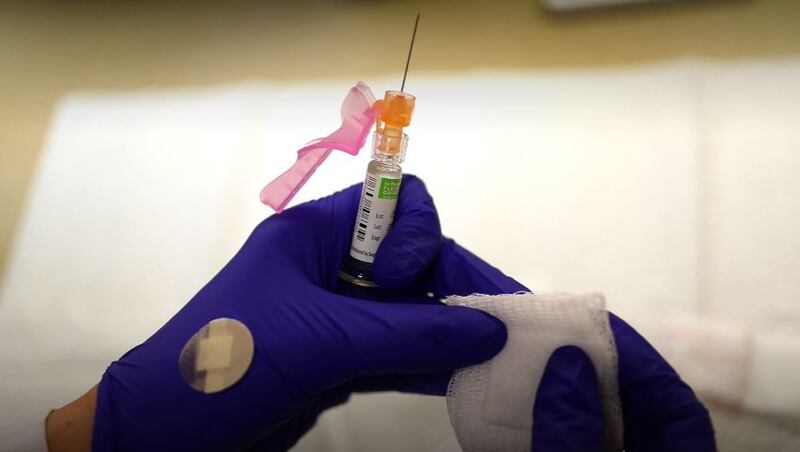SEATTLE — In this lab at the University of Washington, researchers are exploring the possibilities of synthetic protein design.
One goal is to make a different and better flu shot known as the universal flu vaccine.
“The current flu vaccines are intended to target a small set of viruses. And our vaccine has been designed to instead target a broader families of viruses,” said Dan Ellis.
Ellis is a leading researcher at the UW Medicine Institute for Protein Design.
Using a computer model, he showed KIRO 7 how the vaccine is built by putting virus pieces on technology developed at the lab called the nanoparticle platform.
“So that if those strain predictions for the vaccine aren’t perfectly accurate, it can still provide protection and therefore be more reliable in the event of a bad flu season,” Ellis explained.
His lab has been working with the National Institute of Allergy and Infectious Diseases’ Vaccine Research Center.
That’s part of the same agency Dr. Anthony Fauci leads.
Just this past week, Fauci testified before the House Appropriations Committee.
“What other progress has been made in the past year towards developing a universal flu vaccine?” asked Chairwoman Rose DeLauro (D-CT).
“Literally it just started today, a Phase 1 trial of what’s called a nanoparticle mosaic approach to its universal flu vaccine. So thank you for asking that question. This is what it looks like,” Fauci answered.
Ellis says the vaccine worked very well when it was tested on mice, ferrets and primates. The next step is testing it on people to see how safe it is.
The trial will include 40 people, half of whom get the experimental universal flu vaccine while the other half will get a standard flu shot.
The human trial is expected to last up to 2 years, so it will be quite some time before there’s even talk of bringing it to market.
But it’s an exciting time for Ellis and other scientists who are working on innovations that will impact global health.
“There’s a lot of potential to extend this technology to other diverse viral families such as coronaviruses, HIV and many other things,” Ellis added.
©2021 Cox Media Group








